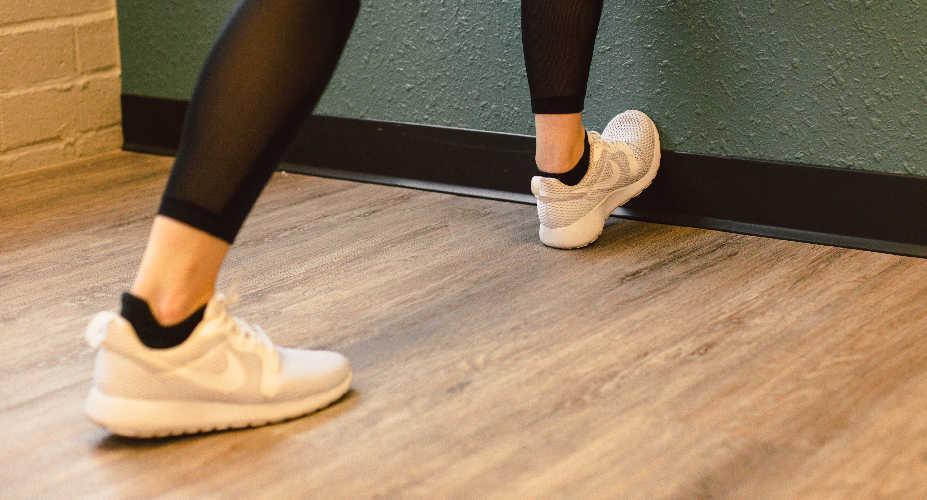
Written with contributions from Superfeet Wellness Experts and the Superfeet education team.
Like most things in life, when it comes to being active, too much of a good thing can sometimes be a bad thing. In this case, that bad thing is a painful stress fracture.
What is a stress fracture?
Foot stress fractures are tiny cracks in the bones of the feet that are caused by accumulated bone damage from the repeated impact on the same area. Foot stress fractures are an overuse injury, most common among runners and athletes who participate in running-heavy sports like soccer and basketball. Stress fracture pain is unique in that it often gets worse during the workout and dissipates after. Athletes and runners may ignore the symptoms and assume the pain will go away, sticking with their chosen activity despite the discomfort. Unfortunately, that can only make things worse.
Think you may have a stress fracture? Read on for common causes, specific types of stress fractures, symptoms, treatments, and ways to prevent this condition from occuring.
Causes of Foot Stress Fractures
New activities can cause foot stress fractures
Foot stress fractures often occur in people who start a new activity that involves the impact of their feet on the ground, like strenuous hiking, running or high-impact sports.
Intensified activities can cause foot stress fractures
Foot stress fractures also happen to people who suddenly increase the frequency, intensity or duration of an activity. For example, let's say you are new to running. After a few short runs, you decide you love running so much that you want to start a run streak and so you begin running longer, faster and more often, all at the same time. This sudden change in activity is a recipe for injury.
Improper footwear can cause foot stress fractures
Wearing flimsy or worn-out shoes that have lost their structure and/or cushioning can increase your risk of developing a stress fracture. Being properly fit for footwear and wearing supportive insoles is a great preventative measure for this condition.
Underlying conditions can cause foot stress fractures
People with weak bones from a separate, underlying condition like osteoporosis can get foot stress fractures, even from low-impact activities like walking.
There are several common areas of the foot where stress fractures can occur. Here are the most common types of foot stress fractures:
What is a Metatarsal Stress Fracture?
The metatarsal bones are the long bones in the feet that link the ankle to the toes. With this type of stress fracture, you will usually experience pain or swelling towards the front or middle of the foot. People who have osteoporosis or inflamed joints are at a much greater risk of metatarsal stress fractures.
Metatarsal Stress Fracture Symptoms
The most common initial symptom of a metatarsal stress fracture is pain. Pain can start at the top or middle of the foot as a dull, persistent ache but can gradually get worse. Pain often goes from generalized and nagging (read: something an athlete often ignores and runs through) to a sharp pain that's localized in a specific area. You may also notice some minor swelling in the area and even tenderness to the touch. Eventually the pain may become severe enough to cause you to stop activity or hesitate to put any weight on your foot. For a definitive diagnosis, visit your physician for an X-Ray, MRI or CT Scan.
Metatarsal Stress Fracture Treatment
The treatment for a metatarsal stress fracture is the one runners and athletes fear the most: rest and time off from the activity. Depending on the severity of the metatarsal stress fracture, most physicians will recommend that an athlete modify activities for about six to eight weeks to allow time for a metatarsal stress fracture to heal. Low or no-impact cardiovascular activities like deep water running or swimming can be a substitute while the stress fracture is healing. Some medical professionals will also recommend implementing the RICE method as a treatment — rest, ice, compression and elevation. If the metatarsal stress fracture is in your fifth metatarsal bone (that's the one on the pinky-toe side of your foot), your doctor may choose to put a cast on your foot or put you in a walking boot to help keep the bones in a secured position while removing stress. Surgery is an option in some cases.
What is a Navicular Stress Fracture?
The navicular bone is a boat-shaped bone that sits above the heel bone, at the top middle of the foot. Navicular stress fractures are common because when the foot hits the ground, compressive forces focus on this bone.
Navicular Stress Fracture Symptoms
Like most stress fractures, the primary symptom for a navicular stress fracture is pain. Pain may start as general or feel like a dull ache, especially at the middle top portion of your foot and may sometimes radiate down into your arch. For a navicular stress fracture, pain can sometimes also be felt in the ball of the foot (caused by irritation of a nerve that runs near the joint that includes the navicular). Initially, pain may go away as soon as you stop activity. As the condition worses, navicular stress fracture pain can become constant or transition to a sharp pain during activity. Minor swelling and tenderness can sometimes develop in the area. Your doctor may recommend an X-Ray, MRI or CT scan to receive an official diagnosis.
Navicular Stress Fracture Treatment
Rest and dedicted time off from weight-bearing activity is your first line of treatment for a navicular stress fracture. As difficult as it is to curb your favorite fitness activity or sport, you'll want to plan for six to eight weeks off to ensure your navicular stress fracture can heal properly. In the meantime, switch to non-weight bearing activities like swimming or deep water running. You may be given a walking boot to aid in comfort and healing of your stress fracture. For advance cases, surgery may also be a treatment option.
What is a Calcaneal Stress Fracture?
The calcaneus bone is your heel bone, and it forms the foundation of the back of your foot. Calcaneal stress fractures aren't as common as metatarsal or navicular stress fractures, but the cause is often the same — a calcaneal stress fracture is an overuse injury that occurs over time or results from a sudden increase in the frequency, intensity or duration of an activity.
Calcaneal (Heel Bone) Stress Fracture Symptoms
Pain in the heel, just with activity at first, is the main symptom of a calcaneal stress fracture. Pain can often be described as a dull or generalized ache. As the condition worsens, you may experience pain, even when not weight-bearing or being active. Tenderness to the touch or swelling can also occur. Symptoms of a calcaneal stress fracture can be similar to the symptoms of plantar fasciitis. Heel pain when you first get out of bed in the morning that decreases as you move may be an indicator of plantar fasciitis versus a calcaneal stress fracture. Swelling or tenderness in the area is more of an indicator of a stress fracture. Want to be sure? Visit your physician for an examination and definitive diagnosis.
Calcaneal (Heel Bone) Stress Fracture Treatment
Temporarily stopping the activity or sport that has caused the issue is the main treatment option for a calcaneal stress fracture. You'll want to take six to eight weeks off of any repetitive, high impact or weight bearing activity, switching to a no-impact activity to help maintain fitness. Physicians may also recommend icing the area to help ease swelling and tenderness. In some cases, a walking boot or cast may be recommended and, if necessary, surgery is also a treatment option for calcaneal stress fractures.
Which Superfeet Insole is best for stress fractures in the foot?
To help prevent future foot stress fractures from developing, be sure you have ample support for your feet during walking, running, and other physical activities. To find the right Superfeet insole for you, start with your shoes. What type of shoes are you wearing? What you are doing in those shoes?
We think you deserve to experience the I-never-knew-my-feet-could-feel-this-good benefits of the Superfeet shape in all your footwear. That’s why we make insoles for casual and dress shoes, shoe inserts for high heels, insoles for hiking, insoles for running shoes, insoles for snow sports, insoles for skates, and more. Need help finding the best Superfeet for you? Take the online insole finder quiz.





